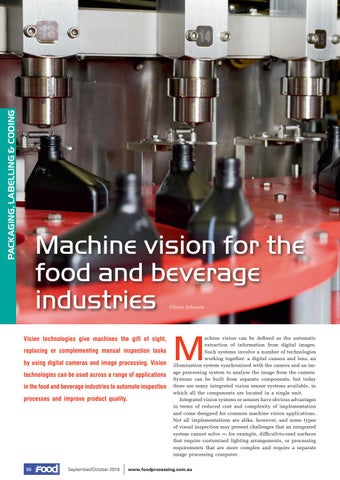PACKAGING, LABELLING & CODING
Machine vision for the food and beverage industries Glenn Johnson
Vision technologies give machines the gift of sight, replacing or complementing manual inspection tasks by using digital cameras and image processing. Vision technologies can be used across a range of applications in the food and beverage industries to automate inspection processes and improve product quality.
56
September/October 2016
M
achine vision can be defined as the automatic extraction of information from digital images. Such systems involve a number of technologies working together: a digital camera and lens, an illumination system synchronised with the camera and an image processing system to analyse the image from the camera. Systems can be built from separate components, but today there are many integrated vision sensor systems available, in which all the components are located in a single unit. Integrated vision systems or sensors have obvious advantages in terms of reduced cost and complexity of implementation and come designed for common machine vision applications. Not all implementations are alike, however, and some types of visual inspection may present challenges that an integrated system cannot solve — for example, difficult-to-read surfaces that require customised lighting arrangements, or processing requirements that are more complex and require a separate image processing computer.
www.foodprocessing.com.au
